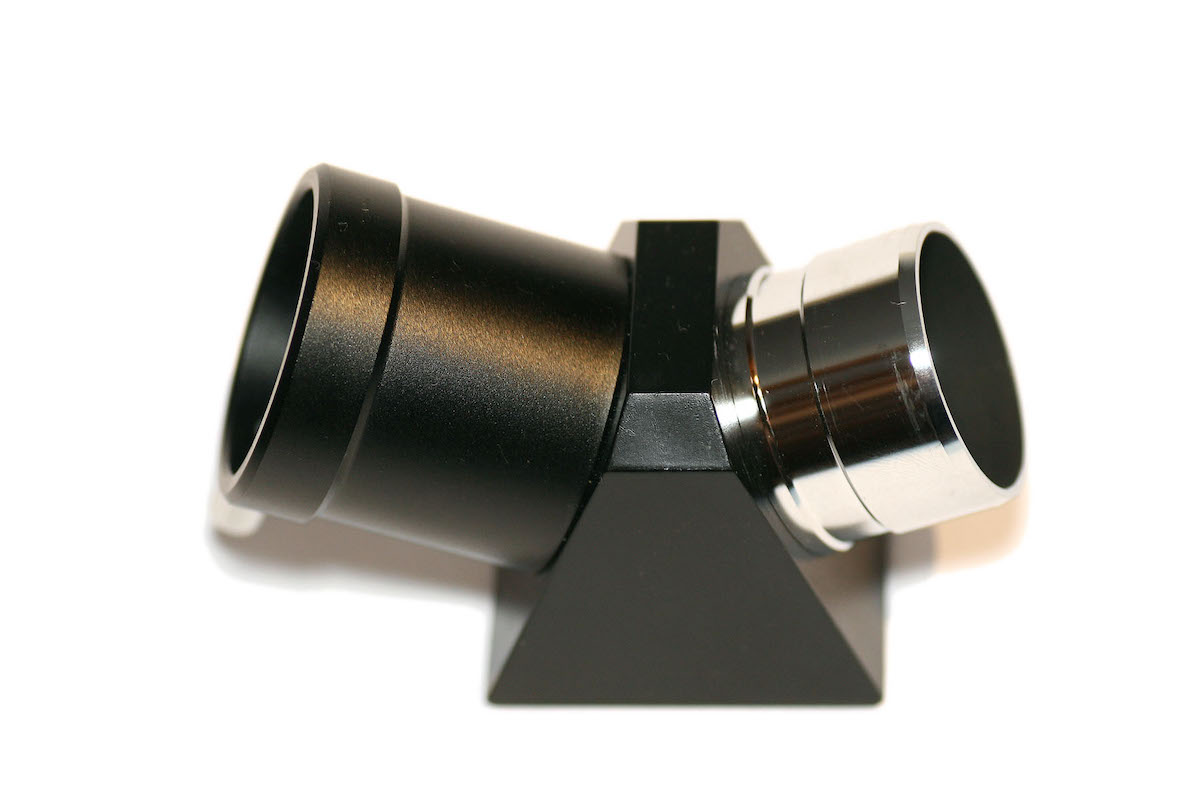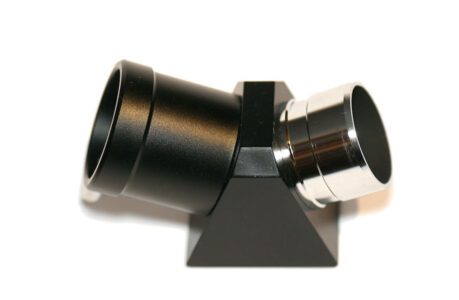As an amateur or professional astronomer, observing celestial objects can be an exhilarating experience. However, the complexity of telescope optics can be overwhelming, especially for beginners. One crucial component that aids in celestial observations is the star diagonal. In this guide, we will unravel the mysteries of star diagonals, including their definition, types, benefits, and applications.
What is a Star Diagonal?
A star diagonal, also known as an astronomical mirror diagonal, is an optical device used to redirect light and correct image orientation in telescopes. In most telescopes, the eyepiece is situated on the side of the tube, which can cause neck strain and uncomfortable viewing positions. A star diagonal solves this problem by redirecting the light path by 90 degrees, allowing for more comfortable viewing.
Types of Star Diagonals
There are two primary types of star diagonals: roof prism and mirror diagonal. Roof prisms are less common, and they require a more compact design for their application. They are often found in binoculars and spotting scopes. In contrast, mirror diagonals are commonly used in telescopes.
Mirror Diagonal
A mirror diagonal is a device that reflects the light path 90 degrees, ensuring that the viewer sees the image in the correct orientation. Mirror diagonals come in different sizes and can accommodate various eyepieces. Some have a 1.25-inch barrel, while others have a 2-inch barrel.
One of the benefits of using a mirror diagonal is that it corrects the image’s orientation, which can be useful when viewing planets and other celestial objects. This type of diagonal is often preferred for high-power observations because it does not cause chromatic aberration.
Roof Prism
Roof prisms are a less common type of star diagonal, mainly found in binoculars and spotting scopes. They are compact and require a more complex design, making them more expensive. Roof prisms have a straight-through design, making them more convenient for stargazing while lying down.
Benefits of Star Diagonals
Comfortable Viewing Position
The primary benefit of using a star diagonal is that it allows for a comfortable viewing position. The diagonal reflects the light path by 90 degrees, which means the eyepiece is situated on the side of the telescope, making viewing more comfortable.
Correct Image Orientation
Another significant benefit of using a star diagonal is that it corrects the image’s orientation. In most telescopes, the image is upside down, making it difficult to identify objects. A star diagonal corrects this problem, making it easier to observe celestial objects.
Improved Image Quality
Using a star diagonal can also improve image quality. Some telescopes have a curved light path, which can cause chromatic aberration, a problem where the image appears fuzzy or has a rainbow effect around the edges. A star diagonal helps correct this problem by redirecting the light path.
Applications of Star Diagonals
Astronomy
The primary application of star diagonals is in astronomy. Using a star diagonal allows for more comfortable and convenient stargazing while also improving the image’s quality and orientation. With a star diagonal, astronomers can view celestial objects in their natural orientation, making identification more accessible.
Terrestrial Observations
Star diagonals can also be used for terrestrial observations. The device can help correct the image orientation, making it easier to observe objects on the ground. Some bird watchers and hunters use star diagonals to improve their observations.
Different star diagonal angles
Star diagonals come in a variety of angles, depending on the design and purpose of the device. The most common angles for star diagonals are 90 degrees and 45 degrees.
90-Degree Star Diagonal
A 90-degree star diagonal is the most common type of star diagonal. As the name suggests, it redirects the light path by 90 degrees, making it easier to observe celestial objects without having to bend or twist your neck. 90-degree star diagonals are ideal for viewing objects that are high in the sky, as they allow for a more comfortable viewing position. They are commonly used for lunar and planetary observations, as well as for deep-sky objects.
45-Degree Star Diagonal
A 45-degree star diagonal is a less common type of star diagonal that redirects the light path by 45 degrees. This type of diagonal is often used for terrestrial observations, as it provides a more natural viewing position when observing objects on the ground. It is also useful for viewing objects that are low on the horizon, as it allows for a more comfortable viewing position. 45-degree star diagonals are not as popular for astronomical observations as 90-degree star diagonals, but they can be useful for specific purposes.
Other Star Diagonal Angles
There are other types of star diagonals that have different angles, such as 60 degrees and 135 degrees. These diagonals are less common and are usually designed for specific purposes, such as astrophotography or binocular observing. The angle of the star diagonal will depend on the specific application and the preferences of the observer.
In summary, star diagonals come in a variety of angles, but the most common types are 90 degrees and 45 degrees. The angle of the diagonal will depend on the specific purpose of the device and the preferences of the observer.
Coatings and star diagonals
Coatings on star diagonals are an essential aspect of their design, as they can significantly impact the quality of the image observed through the telescope. Coatings are designed to reduce the amount of light reflection, which can lead to a loss of contrast and a decrease in image quality. Different types of coatings can be applied to star diagonals, including aluminum, silver, and dielectric coatings.
Aluminium Coatings
Aluminium coatings are the most basic type of coating used on star diagonals. They are inexpensive and relatively durable, making them a popular choice for beginner-level telescopes. However, they do not provide the same level of image quality as other types of coatings, as they reflect a significant amount of light.
Silver Coatings
Silver coatings are an older type of coating used on star diagonals. They are highly reflective, which can provide a brighter image than other types of coatings. However, they are less durable than other coatings and can degrade over time due to environmental factors, such as humidity and pollution.
Dielectric Coatings
Dielectric coatings are the most advanced type of coating used on star diagonals. They are made up of multiple layers of materials that are designed to reduce light reflection and increase contrast. Dielectric coatings can provide a high level of image quality and are durable, making them a popular choice for advanced-level telescopes. They are more expensive than other types of coatings, but the improved image quality can be worth the investment for serious observers.
The size of a star diagonal
The size of a star diagonal refers to the diameter of the barrel that connects to the telescope’s focuser. Star diagonals come in different sizes, including 1.25 inches and 2 inches, which are the most common sizes for astronomical telescopes.
1.25-Inch Star Diagonal
A 1.25-inch star diagonal is the most common size for astronomical telescopes. It is the standard size for most eyepieces, and many telescopes come with a 1.25-inch focuser. A 1.25-inch star diagonal is suitable for most astronomical observations, including lunar and planetary observations and deep-sky objects.
2-Inch Star Diagonal
A 2-inch star diagonal is a larger size than a 1.25-inch diagonal and is suitable for larger telescopes with a larger focuser. A 2-inch diagonal can provide a wider field of view and is often used for deep-sky observations, such as galaxies and nebulas. They can also be useful for high-magnification planetary observations, as they can provide a more stable platform for the eyepiece.
Other Star Diagonal Sizes
Star diagonals can come in other sizes, such as 0.965 inches, which is a less common size used for some older telescopes. These sizes are less common and may be more challenging to find compatible eyepieces and accessories.
In summary, the size of a star diagonal refers to the diameter of the barrel that connects to the telescope’s focuser. The most common sizes for astronomical telescopes are 1.25 inches and 2 inches, with 1.25 inches being the standard size for most eyepieces. The size of the diagonal will depend on the size of the focuser and the specific application of the telescope.
How to pick the right star diagonal for your needs and some examples
Picking the right star diagonal for your needs depends on several factors, including the type of telescope you have, the size of your focuser, the angle of the diagonal, and the coatings on the diagonal. Here are some tips on how to pick the right star diagonal for your needs:
- Check the size of your focuser: The size of your focuser will determine the size of the star diagonal you need. Most telescopes have a 1.25-inch focuser, but larger telescopes may have a 2-inch focuser. Make sure to check the size of your focuser before purchasing a star diagonal.
- Consider the angle of the diagonal: Star diagonals come in different angles, including 90 degrees and 45 degrees. The angle you choose will depend on the type of observations you plan to make. If you plan to do mostly astronomical observations, a 90-degree diagonal is recommended. If you plan to do terrestrial observations, a 45-degree diagonal may be more suitable.
- Look for high-quality coatings: The coatings on the star diagonal can significantly impact the quality of the image you observe. Look for high-quality coatings, such as dielectric coatings, which can provide a high level of image quality and durability.
- Consider your budget: Star diagonals can range in price from less than $50 to several hundred dollars. Consider your budget when choosing a star diagonal, but remember that higher-priced models may provide better image quality and durability.
Examples of Star Diagonals
- Celestron 1.25-inch Star Diagonal: This is a basic star diagonal suitable for beginner-level telescopes. It has an aluminum coating and a 90-degree angle, making it suitable for most astronomical observations. It is available for less than $30.
- Orion Dielectric Star Diagonal: This is a high-quality star diagonal suitable for advanced-level telescopes. It has a dielectric coating and a 90-degree angle, providing a high level of image quality and durability. It is available for around $150.
- William Optics 2-inch Star Diagonal: This is a high-quality star diagonal suitable for larger telescopes with a 2-inch focuser. It has a dielectric coating and a 90-degree angle, providing a wide field of view and stable platform for high-magnification observations. It is available for around $250.

